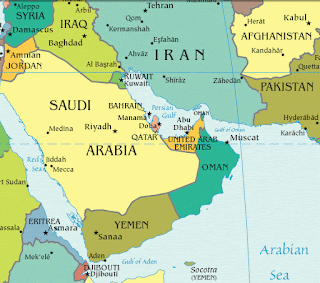Effect of settling Iran-Oman maritime borders on energy projects
Iran and Oman eventually on May 26 agreed to demarcate the stretch of their maritime borders. Excluding the tension between Iran and the United Arab Emirates over three islands in the Persian Gulf, namely Abu Musa, Greater Tunb, and Lesser Tunb, Iran’s maritime borders across the Persian Gulf and the Gulf of Oman are absolutely defined.
Iran and Saudi Arabia have already settled their maritime borders in the late 70s. Iran has no dispute with other Arab nations over maritime borders. Iran and Oman share 450 kilometers of maritime borders.
Aside from the issue of shipping and the possibility of emerging land disputes in the upcoming years, the issue of owning seep sea energy resources is of high importance for the two countries, particularly taking into account that Iran and Oman have joint borders both in the Persian Gulf and in the Gulf of Oman.
A map of Iran’s oil and gas fields, published by the Iranian Oil Ministry, shows that the two countries share just an oil-gas field in the Persian Gulf, named Hengam field. In the Gulf of Oman the two countries have no shared fields.
Iran currently extracts around 20,000 barrels per day of oil from the Hengam field, and Oman extracts half of that. The two countries disputed over their shares of the field. Iran says 80 percent of the field is located within its territorial waters.
According to Iran’s estimation, the field holds about 700 million barrels of oil and 56 billion cubic meters of gas. Iran plans to establish facilities to collect 2.2 million cubic meters of associate petroleum gas per day from the field.
Iran has invested $450 million in the first phase of development of the field. The second phase of the development plan aims to increase production to 30,000 bpd of oil and establish a gas sweetening refinery at a cost of $800 million.
Moreover, the more important issue is that no considerable exploration operations have been conducted so far in the Gulf of Oman. Iran has not yet discovered any field in the Gulf of Oman. Iran has carried out exploration operations in the Caspian Sea, and discovered a field, namely Sardar-e Jangal. The country is planning to start seismic and exploration operations in the Gulf of Oman.
Iran has drilled two wells for the exploration of gas hydrates in the Gulf of Oman. Gas hydrate has a very high concentration of methane. A cubic meter block of methane hydrate can release a energy equals to about 160 cubic meters of gaseous methane .
The Iranian Oil Ministry hopes to find huge deposits of gas hydrate in the Gulf of Oman. Iran and Oman have also signed a deal, according to which Iran will export 10 billion cubic meters of gas per year to Oman by 2017, but the two sides have yet to reach an agreement on gas price and also on building a subsea gas pipeline.


Comments
Post a Comment